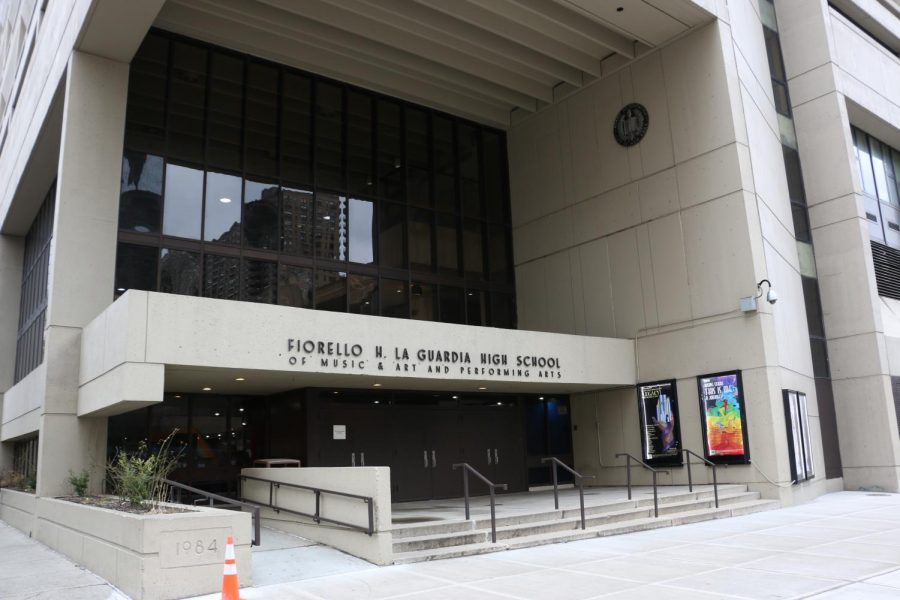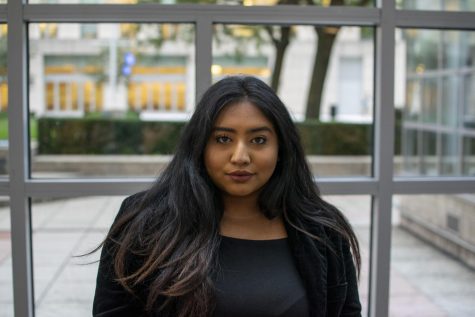We Need to Diversify Specialized High Schools
ETHAN COUGHLIN/THE OBSERVER
With the announced changes to the specialized high school system, the demographics of the school will better reflect those of the city.
February 19, 2019
In a June 2018 effort to diversify the specialized high schools of New York City, Mayor Bill de Blasio and Schools Chancellor Richard A. Carranza proposed to expand the Discovery program created in the 1970s. The Discovery program was initially created to give low-income students more opportunities to enroll in specialized high schools, but the pair planned to alter the criteria for enrollment in order to restrict selection to students in high-poverty schools. De Blasio and Carranza also intended to allocate 20 percent of seats in the specialized high schools to these students to ensure the percentage of black and Hispanic students in these schools increases from nine to 16.
In addition, their plan eliminated the admissions test used to filter out and accept students based on exam scores. Instead of reserving spots in the specialized high schools for students who score the highest on the exam, spots would be held for students who perform the strongest academically in their middle schools.
To eliminate the admissions test, de Blasio will have to enact legislation to repeal laws in effect since the ’70s. If passed, the population of the schools will finally reflect the populace of the city. Currently, black and Hispanic students make up 67 percent of the student population in all NYC public schools, however, only a fraction of these students are offered spots in specialized high schools. Upon complete implementation, the plan will increase the offers given to black and Hispanic students to 45 percent.
This announcement to diversify schools has been greeted with hostility and retaliation. In December 2018, news broke that advocates for Asian-American students were suing the mayor, claiming that this proposition to change the admissions process is discriminatory.
One of the attorneys for this case argued that to only target high-poverty students for enrollment in the Discovery program would make many Asian-Americans lose eligibility for those seats. Wen Fa says that de Blasio wants to “racially balance” the schools according to his preference. He compared this plan to “gerrymandering,” although this plan would actually increase the representation of its constituents rather than undermine them.
This plan is not meant to racially balance the schools, but rather to desegregate the school system. There is a stark discrepancy in the achievement gap between white and Asian-American students in comparison to black and Hispanic students as a result of maldistribution of resources. Historically, the quality of education in metropolitan areas across the United States has been unequally distributed among racial groups. Black and Hispanic students are more likely to receive older books, lesser-qualified teachers, older technology and have liberal arts program cuts because they are more likely to live in high-poverty neighborhoods. NYC schools, in particular, are profoundly segregated. In fact, studies from 2010 show that over 90 percent of black students in NYC attend schools where the majority of students are racial minorities.
Six decades have passed since the Supreme Court decided that schools could no longer be “separate but equal.” Since then, there has hardly been an attempt to diminish the residential segregation that still dictates the quality of education students in impoverished areas receive.
Additionally, former remnants from Mayor Michael Bloomberg’s initiatives still impact the school system in NYC. In 2002, he bullied his way into gaining control over the NYC public school system. A self-made businessman began treating schools like more of his businesses. Although many of his reforms were beneficial when they came to fruition, the results were bittersweet.
Under his administration, the number of charter schools allowed in the city increased exponentially. These schools were heralded as superior alternatives to the traditional public schools, but to this day they come with many strings attached.
Studies show that the results of these charter schools generally show an upward trend in grades, however, the research on these institutions is limited to schools that are performing well. Because these charter schools are federally funded, they take away funding from traditional public schools. Additionally, they perpetuate the segregation of education since many of the charter schools that are high-performing do not have students from high-poverty disadvantaged backgrounds. In fact, the ones that do usually do not produce test scores that compare to advantaged students.
If we expect students from underserved backgrounds to be restricted to underfunded traditional schools and ineffective charter schools, what chance do they have to bring themselves out of the vicious cycle of poverty? If there are plans to subdue the systemic superstructure of racism in our education system, we should support it rather than scrutinize it.
That is not to say that Asian-Americans are undeserving of spots in these schools —they are. But as citizens, we owe it to these disenfranchised and overlooked students to have the opportunity to pursue their own American Dream.
New York City students in economically precarious situations are still forced to endure de facto separate and unequal education institutions. These students face residential segregation, unorganized zoning policies and lack resources to a quality education.
What we need to do now is to rectify the wrongs of the past. By allowing students of black and Hispanic backgrounds to have a fair chance of gaining entry into these specialized high schools, we would be painting a picture of progress for the city and the nation. These changes will show disadvantaged groups that their history, present and future matters. And most importantly, that they matter.











Richard Carranza's conscience • Feb 22, 2019 at 9:41 pm
If the real goal were to desegregate the school system, why focus solely on the Specialized High Schools, which account for 6% of seats? Why don’t de Blasio and Carranza reduce the barriers at the 1/3 of all high schools which are screened and that contribute to segregation? Why wait for state legislation to change the admissions requirements rather than eliminate geographic priority for District 2 high schools, which include the elite schools on the Upper East Side that are more accessible to upper Manhattan and the Bronx? Because the obsession with eliminating the SHSAT is simply a distraction, not very different from President Trump’s border wall. Let’s ask Carranza to wave his chancellor’s wand to remove portfolio requirements and geographic priority.
Offended Student • Feb 22, 2019 at 9:06 pm
It’s interesting to see how one group of color always puts down one group of color. Why can’t Black and Latino students have the same opportunities as white and Asian students. To the student that said that what does getting rid of the SHSAT have to do with black students receiving less than adequate materials for schools. My response is this exactly, because they don’t have good teachers, books or materials they never get the efficient preparation they need to do well on these tests. I myself am a student who has always excelled academically but have bombed standardized testing throughout the years. I am sick of other minority groups always putting down Black People meanwhile black people will always be quick to defend other minority groups. It is nice to know that the minority groups on campus also feel black people don’t deserve a chance at good education.
Munson Lung • Feb 20, 2019 at 10:50 am
Bhuigyan talks about the “historical maldistribution of resources”, e.g. Blacks and Hispanics tend to get “older textbooks” and “less qualified teachers”. Who is to blame for that? How does getting rid of the SHSAT solve the problem?
Finally, if this “maldistribution” is *historical*, then how come for 20 years, from the 1970s through the 1990s, Brooklyn Tech, using the same SHSAT, was majority Black and Hispanic?
Stephen Gambone • Feb 20, 2019 at 8:51 am
The stark difference of greatest significance is that Asian students apply to a specialized school in great enough numbers and Black and Latino students do not. For the last four years Latinos have had the lowest rate of applying to a specialized school and Asians have had the second highest. Since the SHSAT is a required part of the application process one need only look at the DOE’s SHSAT attendance record to see which students are applying and which students are not.
Diversity in applying to a specialized school requires that the number of Latino applicant must be 2 and a half times the number of Asian applicants since that is the diversity ratio in the total student population. So, for true diversity, the number of Latinos sitting for the SHSAT should be 2.5 times the number of Asian students sitting for the exam. Do the arithmetic and you’ll find that in 2018 alone there were over 15,000 missing Latinos at the SHSAT… over 15,000 missing Latino applications to a specialized school.
Since there is no diversity in the applications to a specialized school there can be no diversity in admissions offers. And messing with the admissions offers does nothing to address the real problem.